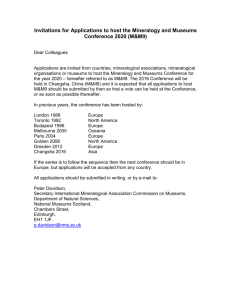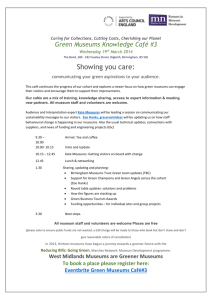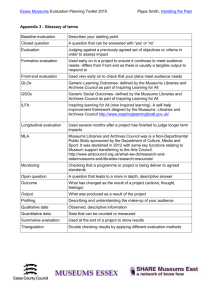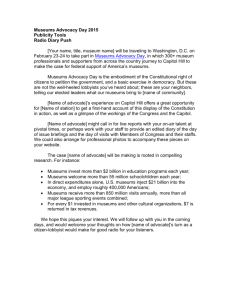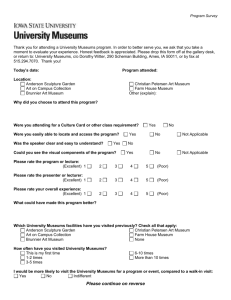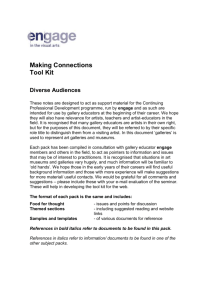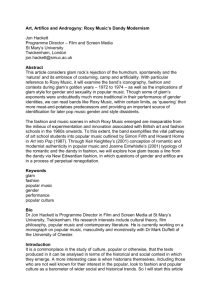The “Grand Challenge”: how can GLAMS
advertisement
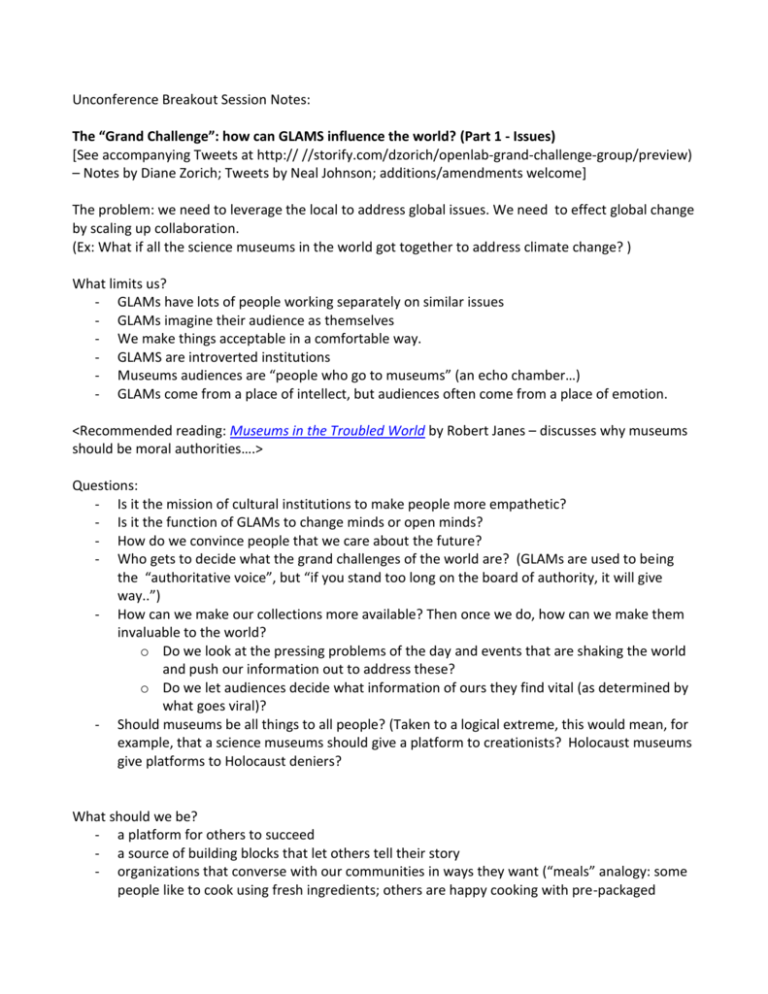
Unconference Breakout Session Notes: The “Grand Challenge”: how can GLAMS influence the world? (Part 1 - Issues) [See accompanying Tweets at http:// //storify.com/dzorich/openlab-grand-challenge-group/preview) – Notes by Diane Zorich; Tweets by Neal Johnson; additions/amendments welcome] The problem: we need to leverage the local to address global issues. We need to effect global change by scaling up collaboration. (Ex: What if all the science museums in the world got together to address climate change? ) What limits us? - GLAMs have lots of people working separately on similar issues - GLAMs imagine their audience as themselves - We make things acceptable in a comfortable way. - GLAMS are introverted institutions - Museums audiences are “people who go to museums” (an echo chamber…) - GLAMs come from a place of intellect, but audiences often come from a place of emotion. <Recommended reading: Museums in the Troubled World by Robert Janes – discusses why museums should be moral authorities….> Questions: - Is it the mission of cultural institutions to make people more empathetic? - Is it the function of GLAMs to change minds or open minds? - How do we convince people that we care about the future? - Who gets to decide what the grand challenges of the world are? (GLAMs are used to being the “authoritative voice”, but “if you stand too long on the board of authority, it will give way..”) - How can we make our collections more available? Then once we do, how can we make them invaluable to the world? o Do we look at the pressing problems of the day and events that are shaking the world and push our information out to address these? o Do we let audiences decide what information of ours they find vital (as determined by what goes viral)? - Should museums be all things to all people? (Taken to a logical extreme, this would mean, for example, that a science museums should give a platform to creationists? Holocaust museums give platforms to Holocaust deniers? What should we be? - a platform for others to succeed - a source of building blocks that let others tell their story - organizations that converse with our communities in ways they want (“meals” analogy: some people like to cook using fresh ingredients; others are happy cooking with pre-packaged ingredients; still others are happy going to McDonalds How people consume food will vary, but we all need to eat.) The risks: - we have to be prepared to allow people to take our data and be wrong in their interpretations of it - we get uncomfortable The “Grand Challenge”: how can GLAMS influence the world? (Part 2 – Some Projects to get started?) How do we cross-pollinate with other communities? Ideas: - Openlab could create an innovation challenge to solve some GLAM problem. Different labs would partner around the problem, then complete with outside communities to solve the problem. GLAMs commit to using the “winning” project or piece that works best to solve the challenge - Pool together a “SWAT” team across GLAMs to pool and analyze audience research data - Create an open content platform to expose content and expertise in the GLAM space based on the needs of learners - Create an OpenLab accreditation system based on a series of values documents (akin to what AAM does with its accreditation program.) - Identify and implement five radical, inter-institutional experiments that challenge established notions - Commission a social network analysis of GLAM audiences - Create “just in time” library that serves varied communities, problems, topics - Establish cross-domain, cross-disciplinary collaboration to study problems, audiences, ideas - Conduct workshops that critique the way we make our resources available. For example, bring together scientists and ask “why aren’t you using our this XYZ collection as we are offering it? Identify the holes (via gap analysis); then identify what we need to do to make our resources usable (Use design thinking principles…)

